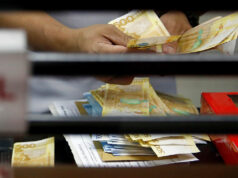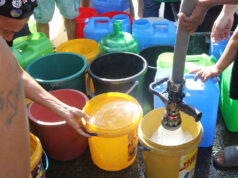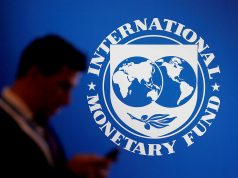Nomura expects negative Philippine debt outlook as economy weakens
CREDIT rating companies may lower the Philippines’ debt rating to negative amid dimming growth prospects caused by a global coronavirus pandemic, according to Nomura Global Markets Research.
S&P may be the first among the three credit rating companies to give a negative outlook for the country within a year, Nomura said in a note.
“We see a rising risk that S&P — which has a “BBB+” rating, a notch above Fitch Ratings and Moody’s Investors Service — could revise the outlook to negative over the next six to 12 months,” it said.
“A key support for its rating upgrade to BBB+ last year was its assessment of a strong growth trajectory, which is now undermined by the COVID-19 shock and subsequent measures to contain the local outbreak,” it added.
Nomura’s assessment came a day after Fitch Ratings lowered its outlook for the Philippines to stable from the positive it gave in February. It maintained the country’s credit rating at “BBB” — a notch above the minimum investment grade that it gave in December 2017.
S&P has lowered its growth outlook for the country to a contraction of 2% this year, after projecting 6% growth back in December.
The Philippine economy shrank by 0.2% in the first quarter, the first contraction since the 3% drop in the fourth quarter of 1998 during the Asian financial crisis.
Before the outbreak, the government was targeting to get an A rating by 2022 to get access to low-cost credit as the country was expected to become an upper middle-income country this year.
Philippine central bank Governor Benjamin E. Diokno has said the rating ambition might have to take a backseat.
Meanwhile, S&P Global Ratings warned that the credit rating of banks with strength issues in some countries may be lowered due to the global health crisis.
The coronavirus could also take its toll on the credit ratings and outlook of some countries, though limited because many of of their banks have boosted their balance sheets, S&P said in a separate note.
“We continue to expect that bank rating downgrades this year due to the COVID-19 pandemic will be limited by banks’ strengthened balance sheets over the past 10 years, the support from public authorities to household and corporate markets, and our base case of a sustained economic recovery next year,” it said.
“We cannot rule out further rating actions, including some downgrades, in particular for banks with pre-exisiting financial strength issues,” it added
S&P said most banks would face earnings rather than capital shocks. This could be worsened by weaker investor appetite and higher funding costs for systems dependent on external financing, and the oil-price shock for some, it added.
The central bank has said local banks have enough capital and buffers to withstand the impact of the health crisis. — Luz Wendy T. Noble



